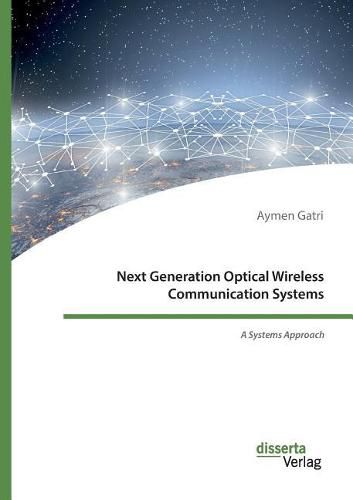Readings Newsletter
Become a Readings Member to make your shopping experience even easier.
Sign in or sign up for free!
You’re not far away from qualifying for FREE standard shipping within Australia
You’ve qualified for FREE standard shipping within Australia
The cart is loading…






This title is printed to order. This book may have been self-published. If so, we cannot guarantee the quality of the content. In the main most books will have gone through the editing process however some may not. We therefore suggest that you be aware of this before ordering this book. If in doubt check either the author or publisher’s details as we are unable to accept any returns unless they are faulty. Please contact us if you have any questions.
In 2017, the value of the global market for free space optical communication technology was $229.2 million and it is expected to grow at a compound annual growth rate of 34% during the years 2018-2023. North America and Asia-Pacific are ranked successively the two major global markets. The high demand for fast, flexible wireless technology among all industries including reconnaissance, last and first mile connectivity, backhaul and internet of things are major drivers for the expected growth of free space optics. Moreover, security and high-speed wireless communication, as well as the emerging need for higher flexibility modules, are also key factors that enhance the growth of the global free space optics market. All of these factors are the major forces behind this book’s investigation of the performance of FSO under severe conditions and environmental impairment, and how FSO systems can be integrated to enhance the next 5G networks revolution. This book provides an in-depth insight of free space optics already applied in military data security as well as in daily data exchange. This system offers several more advantages compared to other technologies such as low cost, mobility equipment’s or security. Moreover, this technology has the potential of becoming an integral and indispensable part of data-processing architectures and telecommunications in the very near future. The book also provides a review of the history of wireless optical telecommunications, together with a synopsis of the application of the principles of electromagnetism in free-space optics. FSO Features and applications are also presented together with an overview of the potential challenges. The environmental impairment itself, which is the key challenge, is put under deep scrutiny. Special attention too is given to the possible mitigation solutions to overcome possible impairments.
$9.00 standard shipping within Australia
FREE standard shipping within Australia for orders over $100.00
Express & International shipping calculated at checkout
This title is printed to order. This book may have been self-published. If so, we cannot guarantee the quality of the content. In the main most books will have gone through the editing process however some may not. We therefore suggest that you be aware of this before ordering this book. If in doubt check either the author or publisher’s details as we are unable to accept any returns unless they are faulty. Please contact us if you have any questions.
In 2017, the value of the global market for free space optical communication technology was $229.2 million and it is expected to grow at a compound annual growth rate of 34% during the years 2018-2023. North America and Asia-Pacific are ranked successively the two major global markets. The high demand for fast, flexible wireless technology among all industries including reconnaissance, last and first mile connectivity, backhaul and internet of things are major drivers for the expected growth of free space optics. Moreover, security and high-speed wireless communication, as well as the emerging need for higher flexibility modules, are also key factors that enhance the growth of the global free space optics market. All of these factors are the major forces behind this book’s investigation of the performance of FSO under severe conditions and environmental impairment, and how FSO systems can be integrated to enhance the next 5G networks revolution. This book provides an in-depth insight of free space optics already applied in military data security as well as in daily data exchange. This system offers several more advantages compared to other technologies such as low cost, mobility equipment’s or security. Moreover, this technology has the potential of becoming an integral and indispensable part of data-processing architectures and telecommunications in the very near future. The book also provides a review of the history of wireless optical telecommunications, together with a synopsis of the application of the principles of electromagnetism in free-space optics. FSO Features and applications are also presented together with an overview of the potential challenges. The environmental impairment itself, which is the key challenge, is put under deep scrutiny. Special attention too is given to the possible mitigation solutions to overcome possible impairments.